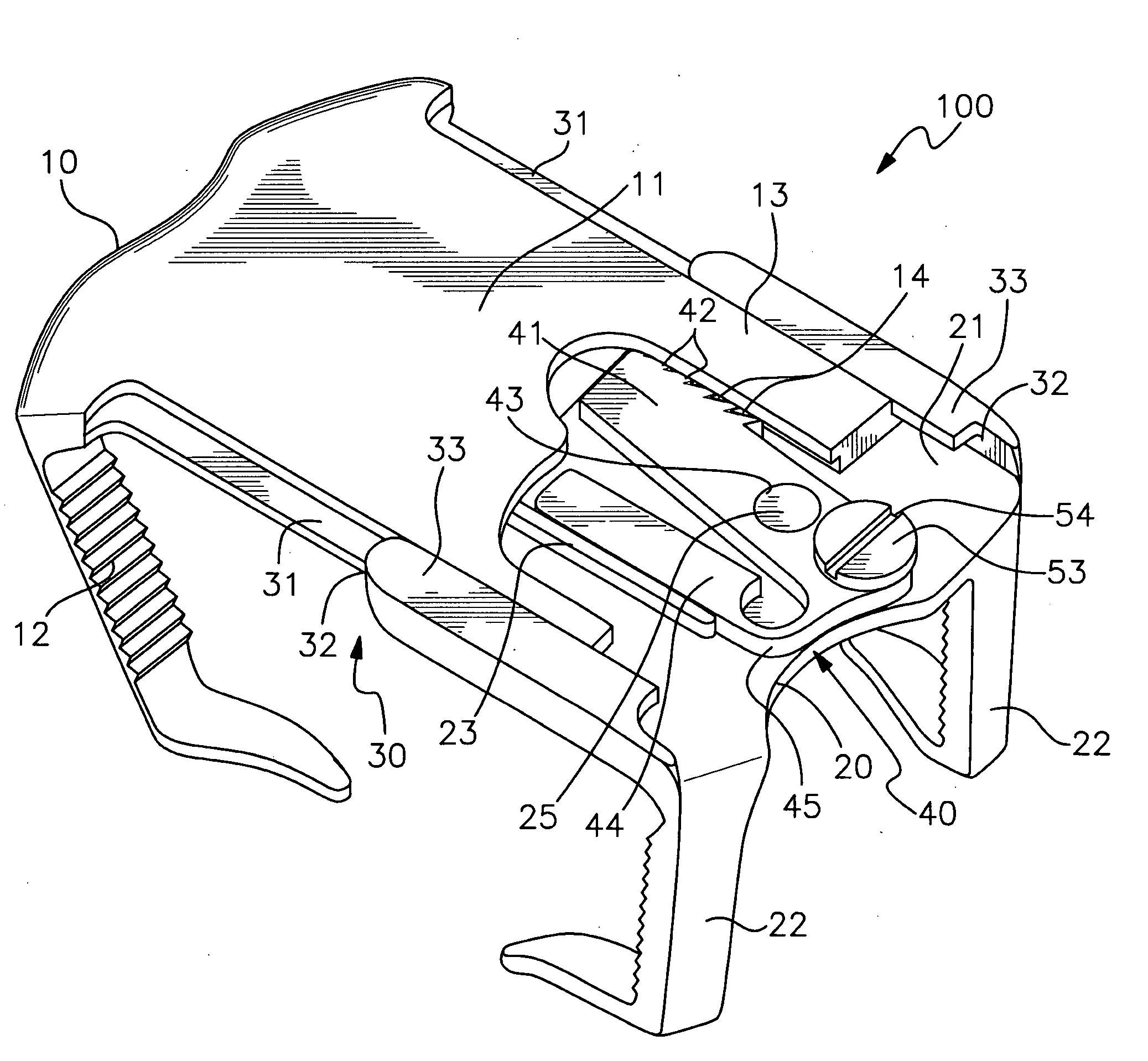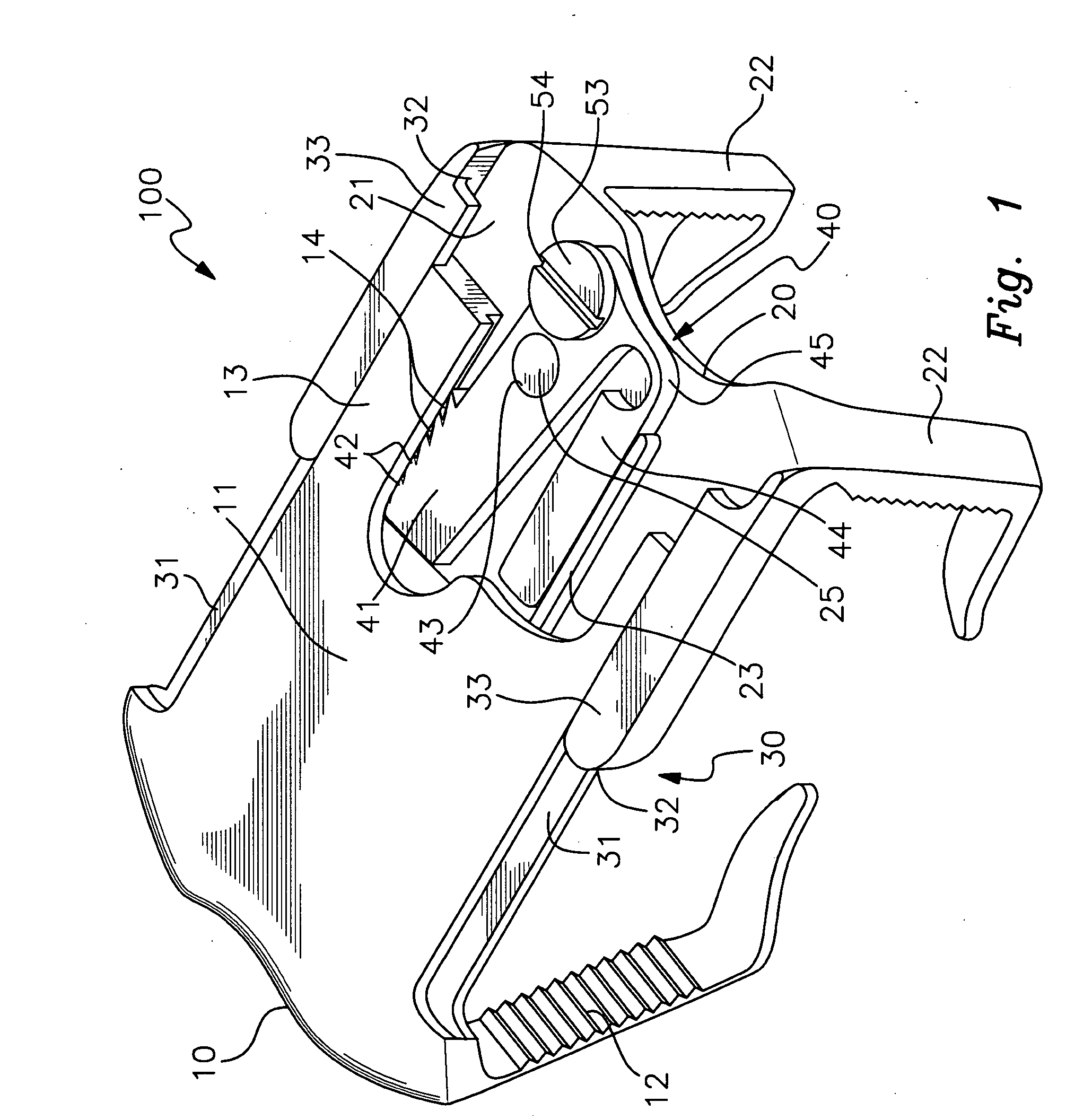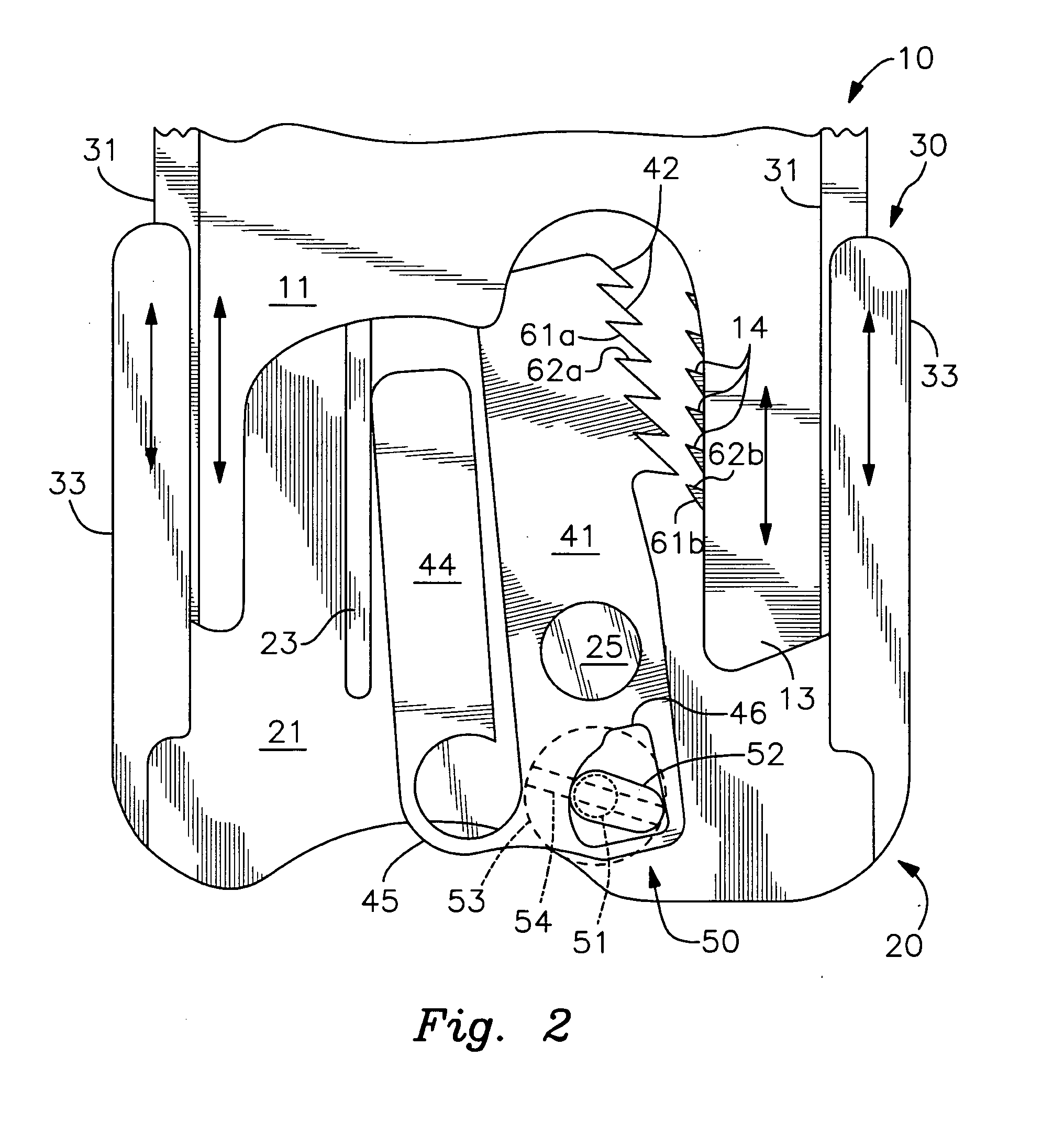Lock and release mechanism for a sternal clamp
a technology of sternal clamp and release mechanism, which is applied in the direction of ligaments, prostheses, osteosynthesis devices, etc., can solve the problems of mechanism not being releasable at all, cumbersome locking mechanism utilized to maintain the sternal clamp in the compressed or contracted position, and difficult adjustment and removal. to achieve the effect of preventing relative movement of the clamp member
- Summary
- Abstract
- Description
- Claims
- Application Information
AI Technical Summary
Benefits of technology
Problems solved by technology
Method used
Image
Examples
Embodiment Construction
[0015]With reference to the drawings, the invention will now be described in detail with regard for the best mode and the preferred embodiment. In general, the invention is a locking and release mechanism and a sternal clamp comprising this mechanism, the sternal clamp comprising a pair of opposing clamp members that engage in a sliding or telescoping manner, whereby the sternal clamp can be placed into an open, closing or locked status. In the open status, the sternal clamp can be lengthened or shortened by bringing together or pulling apart the paired clamp members, as well as disassembled by fully separating the clamp members from each other. In the closing status, the clamp members can only be pushed together such that the sternal clamp can be shortened, but the clamp members cannot be pulled apart to lengthen the sternal clamp. In the locked status, the clamp can be neither lengthened nor shortened as relative movement of the clamp members is precluded.
[0016]The sternal clamp 1...
PUM
 Login to View More
Login to View More Abstract
Description
Claims
Application Information
 Login to View More
Login to View More - R&D
- Intellectual Property
- Life Sciences
- Materials
- Tech Scout
- Unparalleled Data Quality
- Higher Quality Content
- 60% Fewer Hallucinations
Browse by: Latest US Patents, China's latest patents, Technical Efficacy Thesaurus, Application Domain, Technology Topic, Popular Technical Reports.
© 2025 PatSnap. All rights reserved.Legal|Privacy policy|Modern Slavery Act Transparency Statement|Sitemap|About US| Contact US: help@patsnap.com



